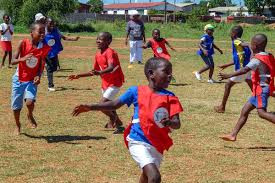
THE United Nations Children’s Fund (Unicef) has raised concern over the sharp drop in the level of pre-primary schooling in Zimbabwe.
In its 2022 report, the UN agency said an estimated 68% children under five years and 47% of teenagers in Zimbabwe were out of school with the government’s education budget also failing to rise to expected levels.
“Nine out of ten children of primary school age are in school. This figure has remained stable in the last decade. While the country targets universal enrolment of children in primary school, maintaining the current high level of enrolment is already a challenge.
“Zimbabwe performs well in net enrolment at the primary school level, but pre-primary schooling remains a challenge. Only six children out of 10 aged three to five are enrolled in pre-primary education. Half of the adolescents in Zimbabwe aged 13 to 19 are outside of school,” the report read.
Unicef said several challenges could be attributed to the low numbers of children in school.
“Poverty and disabilities are among the main triggers for children in primary school age out of school. Because of poverty, parents lack the resources for school fees, leading to absenteeism.
“This affects progress in ensuring inclusive education, especially for integrating children with disabilities who are often deprived of their right to education. 12% of government spending goes to education, below the globally agreed target of 20% of learners. Only 10% of children with disabilities are in school,” read the report.
“Unicef calls upon the government and partners to turn their commitments into action by increasing budget allocation to education, towards reaching the global target of 20% of the national budget, and investing in education infrastructure, including digital devices and connectivity, learning material, teacher education and motivation, and protection and access for vulnerable children.
- Mavhunga puts DeMbare into Chibuku quarterfinals
- Bulls to charge into Zimbabwe gold stocks
- Ndiraya concerned as goals dry up
- Letters: How solar power is transforming African farms
Keep Reading
“A well-financed education sector leads to quality learningoutcomes, inclusive quality teaching and learning and increased girls’ participation,” the report added.











